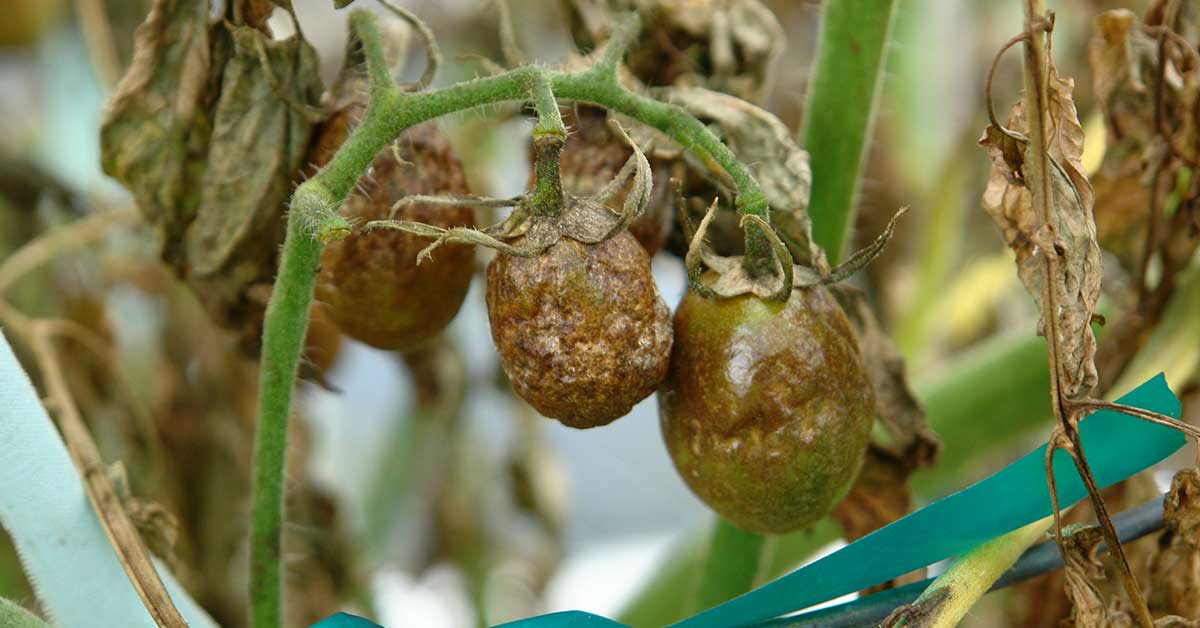Tomato root rot is a stubborn issue that impacts tomato plants. It can lead to total loss of your tomato crop and reduced fruiting at harvest time. Fortunately, it is possible to save tomato plants that are impacted by tomato root rot and reduce the likelihood that it impacts your crop in the future. In this article, we’ll take a deep dive into what causes root rot, its symptoms, and how to fix and prevent it.
What is root rot?
One common cause of root rot in tomatoes is Phytophthora nicotianae var. nicotianae, which is an oomycete. An oomycete is a subclass of parasitic fungi that includes water mold, which encompasses Phytophthora.
Fungi that cause root rot are not uncommon, and once present in soil, they are usually here to stay. Even in circumstances where crop rotation has left soil to set for years without a tomato crop planted, the fungi is still present. Tomato root rot is caused by not only the presence of fungi but the conditions that enable the fungi to grow, spread, and damage the roots of your tomato plants. We’ll talk more about those conditions in a moment.
Signs of tomato root rot
Gardeners will usually observe the signs of tomato root rot above ground before they do below ground. Root rot damages the roots of your tomato plants, which leads to:
- Stunted growth
- Wilting leaves and branches
- New growth death
- Rotting fruit
Root rot usually targets the tap root of tomato plants first, which reduces the amount of nutrients and water that the roots can uptake to other parts of the plant. This is why we see above-ground symptoms develop. In seedlings, this may cause the base of the stem to become mushy and infirm. In this case, the seedling is lost. New soil should be used for future seeds.
How to fix tomato root rot
Fixing root rot in tomatoes is a challenge due to the fact that it requires an additional shock to a plant already struggling with a disease. The only way to stop root rot is to remove the roots that have been killed by Phytophthora. To do this, you must dig up the plants, brush away the soil from the roots, and carefully inspect the roots.
If you’re lucky, you’ll find that only a small portion of the roots have turned brown and mushy. If there are still plenty of strong, firm, white roots on your tomato plant, you have a decent chance of saving it. If all the roots have turned brown and mushy, the plant is a total loss.
Once you have removed the rotten parts of the tomato roots, thoroughly rinse the remaining roots with water and prepare a new planting medium. I would recommend choosing a large pot with brand-new organic potting soil. Carefully replant your tomato in the new soil. From here, all you can do is keep your fingers crossed and hope your plant is able to thrive in its new location.
Prevention
Once the fungi that cause root rot are present in the soil, it’s challenging to get rid of it. But that doesn’t mean you can’t control it and prevent it from damaging future tomato crops. Phytophthora thrives in poor-draining, water-logged soil. Its spores move easily through soil that is soaked with water that doesn’t drain properly. Before planting tomatoes, or any crops, in this soil again, thoroughly, and I mean thoroughly till that soil. Add lots of organic material to the soil as well.
Tilling will help loosen up the soil and improve its drainage. And when the time does come to plant new crops in that soil, always be certain you aren’t overwatering and that the soil is draining properly. After watering, the soil around your plants should be damp, but not soaked and mushy.













